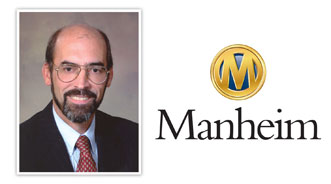Webb Spots Which Wholesale Market Segment Came in Weakest in May

Along with taking a longer look at employment data and trends, Manheim chief economist Tom Webb examined mileage changes by wholesale price tiers to find the weakest segment of the wholesale market in May relative to a year ago.
Webb’s analysis determined vehicles in the $11,000 to $13,000 price range fell into that segment.
“This hurt the resale performance of some commercial fleet managers, especially if their portfolio was concentrated in just a couple of specific models of midsize cars,” Webb said in Manheim’s June Auto Industry Brief. “If their portfolio had a large number of small crossovers or full-size pickups, they did much better.”
Webb also noticed that May prices for rental risk units sold at auction (unadjusted for changes in mix and mileage) came in flat compared with a year ago.
Webb also indicated that after adjusting for market class shifts and mileage, prices for rental risk units in May were 2.2 percent lower than a year ago. The average mileage on those units was also down about 2 percent, according to Webb.
“Within market classes, pickups continued to significantly outperform all other segments,” Webb said. “Used-vehicle pricing for compact and midsize cars remained, however, under the pressure of competition from the new-vehicle market and increased wholesale supplies.”
Explanation of Recent Employment Data
In the Q&A section of Manheim’s June Auto Industry Brief, Webb addressed a question on how total employment increased by 175,000 in May, but the unemployment rate increased from 7.5 percent to 7.6 percent.
The inquirer put in plainly, saying, “What gives?”
Webb began his reply by stating that in May, an improving economic outlook caused some previously discouraged workers to re-enter the labor market.
“Thus, the labor force increased even faster than employment, and the unemployment rate rose,” he said.
For decades, Webb explained that the rule of thumb for economists has been that job growth needs to total 150,000 per month just to keep the unemployment rate from rising.
“Of course, the actual job growth needed can vary greatly depending on where we are in the economic cycle,” Webb said.
Webb then recapped the current business cycle of the U.S. economy. He pointed out that the unemployment rate peaked at 10 percent in October 2009 and has since fallen to 7.6 percent.
“That relatively sharp decline in the unemployment rate was achieved even though payroll growth averaged only 137,000 per month over the 44-month period,” Webb said. “The explanation for that is simple: The potential labor force grew very slowly, and the labor force participation rate fell to a 30-year low.”
Webb continued by asking himself a question, wondering whether the old rule of thumb should be discarded as simply outdated. He noted that a recent paper from the Chicago Federal Reserve suggested the answer is yes.
Webb highlighted the report’s modeling showed that secular shifts in labor force demographics and slower population growth mean that job growth of only 80,000 per month will allow for a further whittling away at the unemployment rate.
“And, by 2016, they believe that job growth of only 35,000 per month will produce a steady unemployment rate,” Webb said. “Several economists argue that the employment rate trend calculated by the Chicago Fed is too low, but there is general agreement that the old 150,000 per month figure is too high.”
Webb listed four other reactions to that Chicago Federal Reserve report, including:
— Focus on the doughnut, not the hole. New- and used-vehicle forecasting models are better-structured when the variable input is employment (the doughnut) as opposed to the unemployment rate (the hole).
— The Fed’s 6.5 percent threshold may be closer than we think. If even slow employment growth can, in fact, significantly lower the unemployment rate, then the Fed’s 6.5 percent guideline for reversing course on quantitative easing is not that far off.
— Pockets of labor shortages may be imminent. Given that the unemployment rate today for college graduates is only 3.8 percent, a significant reduction in the overall unemployment rate would mean more job openings for which there are few qualified applicants. In other words — slow employment growth, but a tight labor market. That’s a prescription for stagflation.
— Structural deficits will far exceed current government estimates. The biggest negative implication contained within the Chicago Fed’s study is what it means for fiscal policy. The unsustainability of the status quo with respect to entitlements becomes clearer, the window to address it becomes narrower, and chasm to be crossed widens.
Continue the conversation with Auto Remarketing on both LinkedIn and Twitter.


